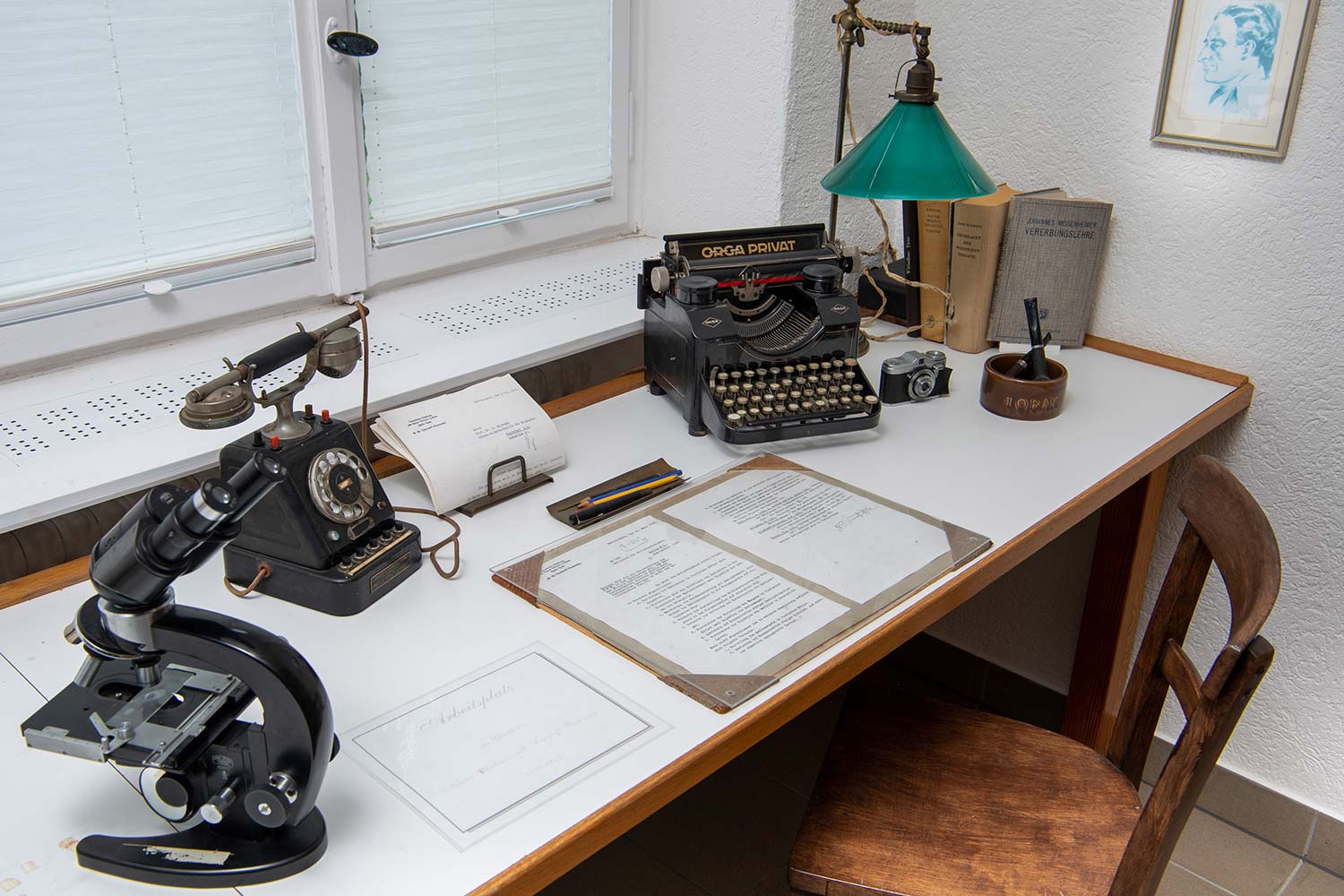1Timoféeff-Ressovsky‘s workplace
1931–1945

As mentioned in the foreword, the Kaiser Wilhelm Institute (KWI) for Brain Research, which had been established in 1916, became the first institute on today‘s Campus Berlin-Buch in 1930. Its founding director was Oskar Vogt, who worked for decades with his wife Cécile Vogt, carrying out research into the biological mechanisms underlying diseases of the nervous system. The Vogts hoped to identify their genetic causes, so in 1925 Oskar Vogt convinced the Russian geneticist Nikolai Wladimirovich Timoféeff-Ressovsky to come to Berlin with his wife Elena Alexandrovna Timoféeff-Ressovska, a geneticist in her own right, to set up a laboratory at the KWI. This laboratory became the nucleus of a future department for genetics in the new building in Berlin-Buch, which was officially opened in 1931.
The KWI for brain research achieved early prominence mostly through Timoféeff-Ressovsky‘s work on gene mutations and the structure of genes, partly carried out in collaboration with Max Delbrück.
In the museum you can see Timoféeff-Ressovsky‘s workplace, transported here from the second floor but otherwise in its original condition. It was in this laboratory that Timoféeff-Ressovsky began his work on the mutagenic effects of X-rays. He used the Drosophila fruit fly as a model due to its ease of use: this small insect only has eight chromosomes and produces a next generation of offspring just ten days after the larva hatches. The geneticist irradiated fertilized eggs and larvae with X-rays to induce mutations. He examined the animals under the binocular magnifying glass, then switched to the microscope for images with better resolution and magnification. It was at this desk that he made the crucial observation that there is a linear relationship between the dose of X-ray radiation applied to a fly and its rate of mutation. In other words, irradiated animals developed altered body parts, and the stronger the radiation, the more significant were the changes.
On the wall to the right of the workplace hangs a publication that arose from his investigations, in 1934. In it, Timoféeff-Ressovsky became the first scientist to use the term “genetic engineering“. Just one year later, he published a seminal paper on gene mutations with the physicists Max Delbrück and Karl Günther Zimmer. Here the authors suggested for the first time that genes should be understood as complex atomic structures. The work is now known as the “Three Men‘s Work“ or because of its green cover, the “Green Pamphlet“. Its publication is considered the beginning of modern genetics in
Germany.
The importance of Nikolai W. Timoféeff-Ressovsky‘s work goes far beyond Berlin-Buch. He coined the idea of genes as molecular assemblies, which is still relevant today.
You can find more information about the life and work of Nikolai Wladimirovich Timoféeff-Ressovsky here.